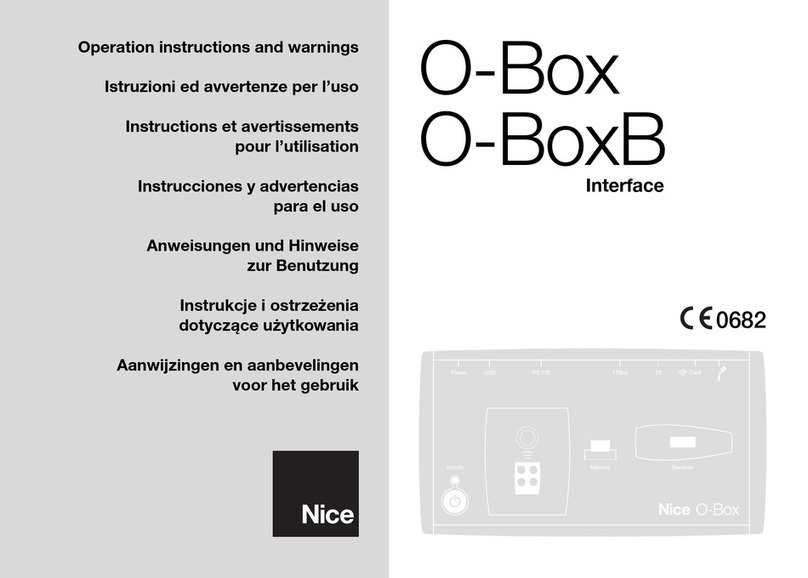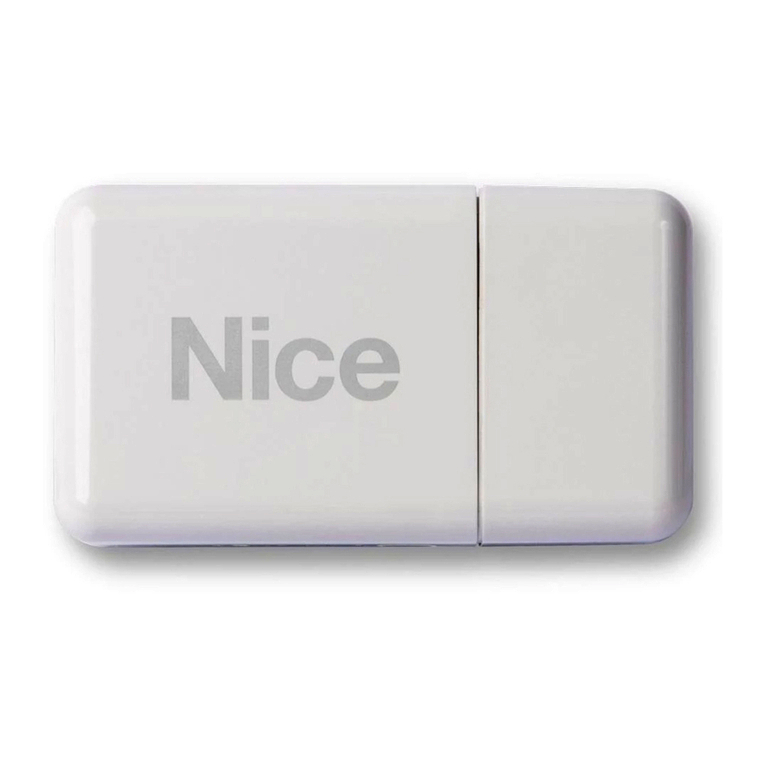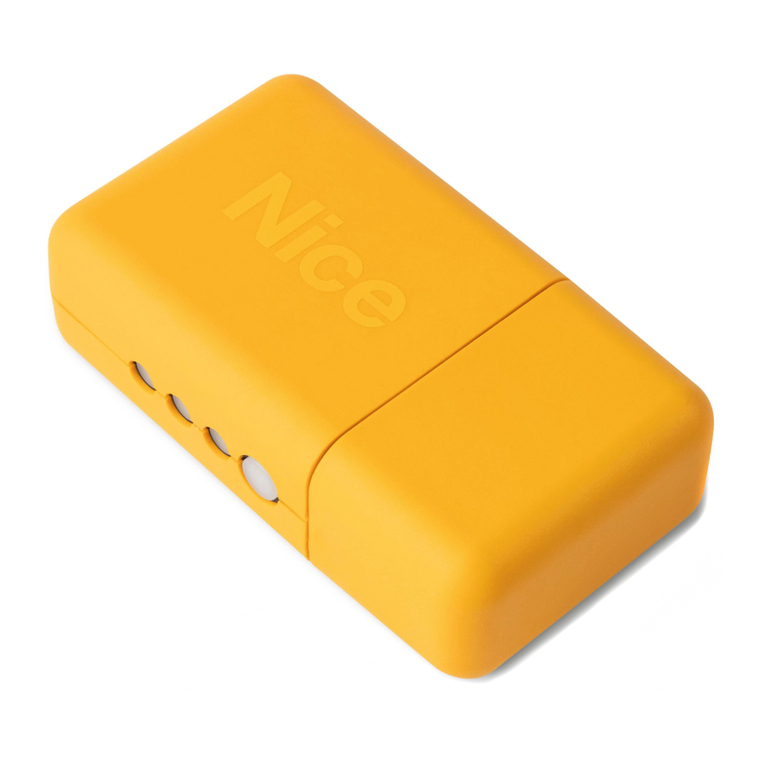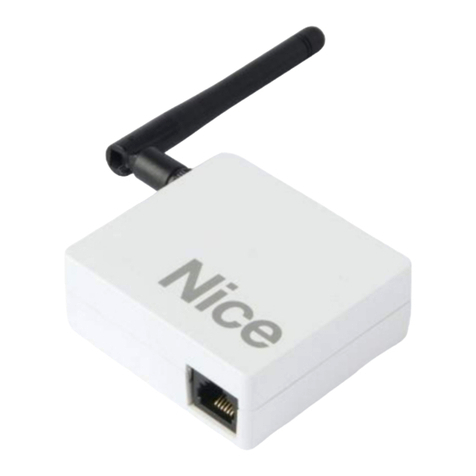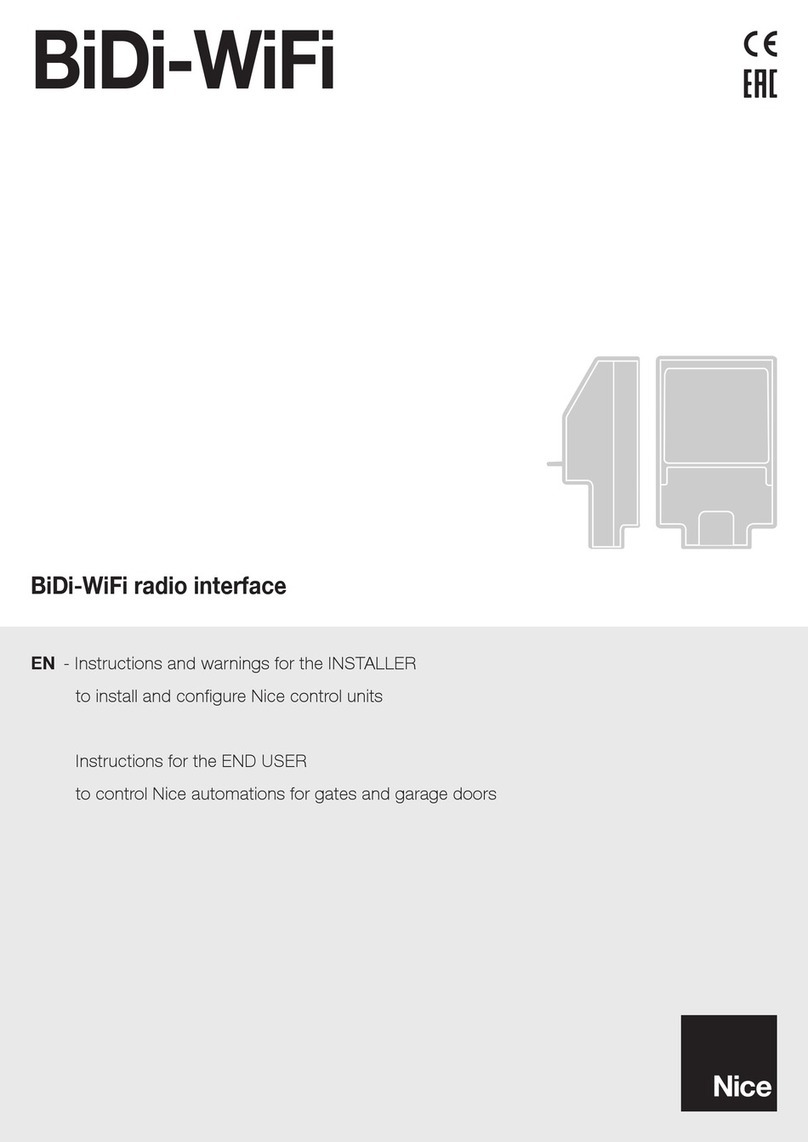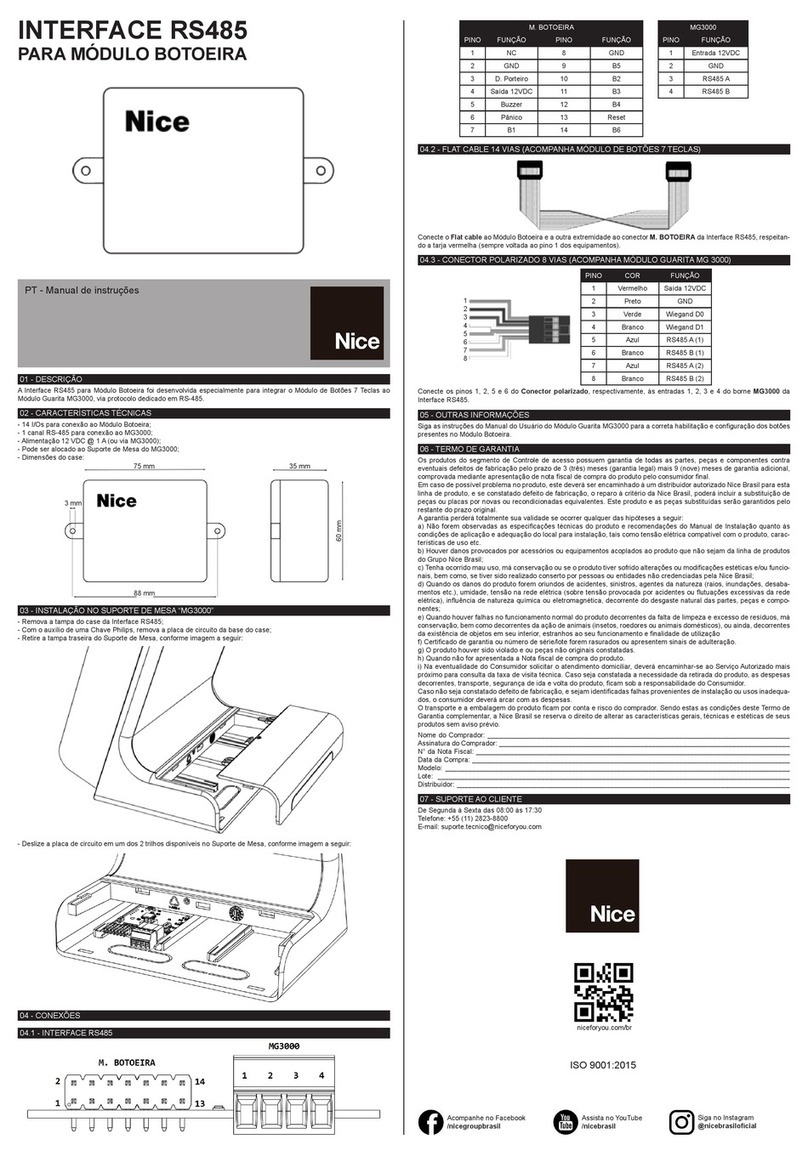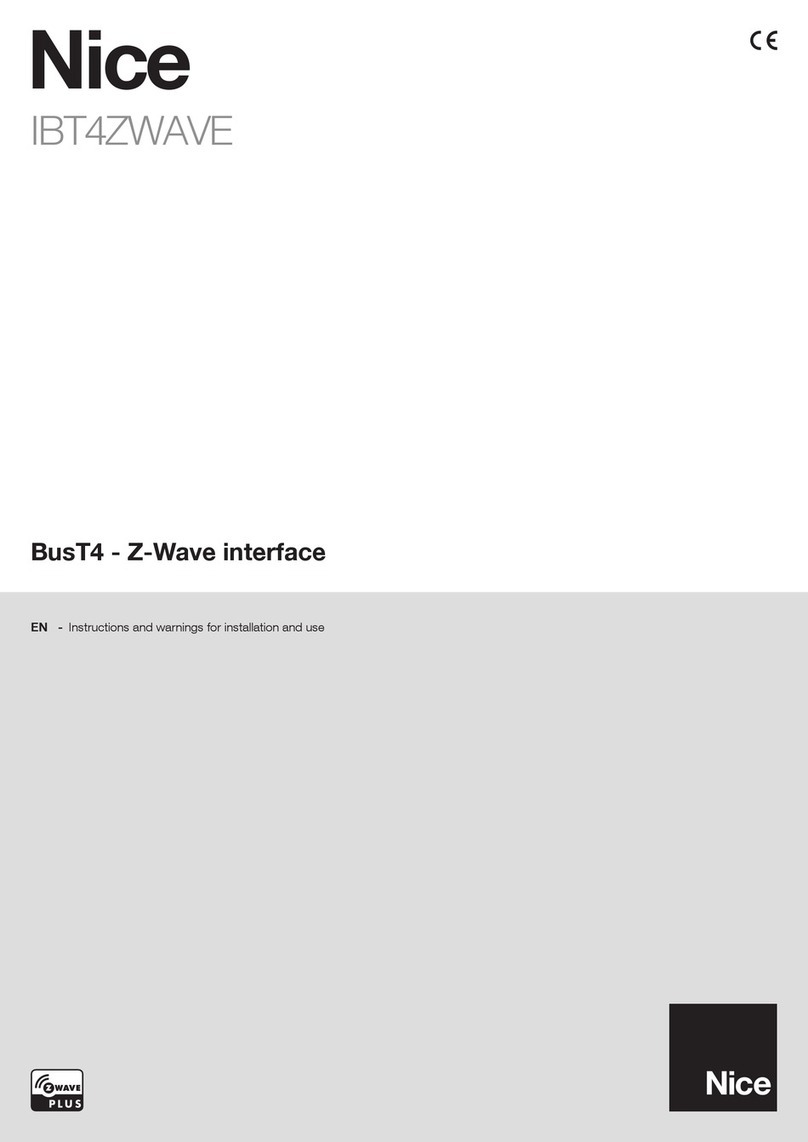
1WARNINGS AND GENERAL PRECAUTIONS
• CAUTION! – This manual contains important instructions and warnings for personal safety. Carefully read all parts of this manual. If
in doubt, suspend installation immediately and contact the Nice Technical Assistance.
• CAUTION! – Important instructions: keep this manual in a safe place to enable future product maintenance and disposal pro-
cedures.
• CAUTION! – All installation and connection operations must be performed exclusively by suitably qualified and skilled person-
nel with the unit disconnected from the mains power supply.
• CAUTION! – Any use other than that specied herein or in environmental conditions other than those stated in this manual is
to be considered improper and is strictly forbidden!
• This product may only be used indoors or protected from weather conditions by control unit’s housing.
• The product’s packaging materials must be disposed of in full compliance with local regulations.
• Do not open the device protection housing as it contains non-serviceable electrical circuits.
• Never apply modifications to any part of the device. Operations other than those specified may only cause malfunctions. The manufacturer
declines all liability for damage caused by makeshift modifications to the product.
• Never place the device near to sources of heat and never expose to naked flames. These actions may damage the product and cause
malfunctions.
• This product is not intended for use by people (including children) with reduced physical, sensory or mental capabilities or who lack experi-
ence and knowledge, unless they have been given supervision or instruction concerning the use of the product by a person responsible for
their safety.
• Make sure that children do not play with the product.
• Check the warnings in the instruction manual for the light source that the product is connected to.
• Handle the product with care, being sure not to crush, knock or drop it in order to avoid damage.
2PRODUCT DESCRIPTION
The BiDi-Dimmer control unit enables the control of a single light source, mains powered. The light
source can be turned on/off and dimmed (if dimmable).
The control unit is equipped with an algorithm of a light source detection. It automatically selects suit-
able control mode and adjusts maximum and minimum light levels.
The BiDi-Dimmer control unit incorporates a radio transceiver that operates at the frequency of 433.92
MHz with rolling code technology to guarantee optimal safety levels.
Each control unit can memorise up to 30 mono or bidirectional transmitters in the series ERA, ERGO,
FLOR, NICEWAY and VERY, which enable the remote control of the unit.
The control unit is equipped with two inputs for controlling the unit by means of external switches.
Memorisation and programming is possible via the programming pushbutton (gure 1) on the BiDi-Dimmer.
The user is guided through the various phases by means of LED signals.
The control unit is equipped with overload, and overheating protection, which will disable the load to
prevent damage to the circuit.
3INSTALLATION
• The product is subject to hazardous electric voltages
• The installation of the BiDi-Dimmer and automations must be performed exclusively by technically qualied personnel, in
observance of current legislation and standards, and according to these instructions. All connections must be made with
the system disconnected from the power supply.
• The BiDi-Dimmer control unit has been especially designed for insertion in a junction box or wall box; its housing does not
feature any protection against water and only basic protection against contact with solid parts. Never place the BiDi-Dim-
mer in inadequately protected environments.
• BiDi-Dimmer can work in 3-wire (with Neutral line) or 2-wire (without Neutral line) installation.
• Never open or perforate the BiDi-Dimmer housing, this is subject to hazardous electric voltages!
3.1 - Preliminary checks
• The power supply line must be protected by suitable magneto-thermal (compliant with IEC/EN 60898-1 standard, rated up to 16A) and
residual-current circuit breakers.
• A disconnection device must be inserted in the power supply line from the electrical mains (the distance between the contacts must be at
least 3mm with an overvoltage category of III) or equivalent system, for example an outlet and relative plug. If the disconnection device for
the power supply is not mounted near the automation, it must have a locking system to prevent unintentional, unauthorized connection.
3.2 - Electrical connections
Carefully follow all the connection instructions. If you have any doubts do not make experiments but consult the relevant
technical specications which are also available on the web site: www.niceforyou.com. An incorrect connection may be danger-
ous and cause damage to the system.
Programming
pushbutton
LED
1
